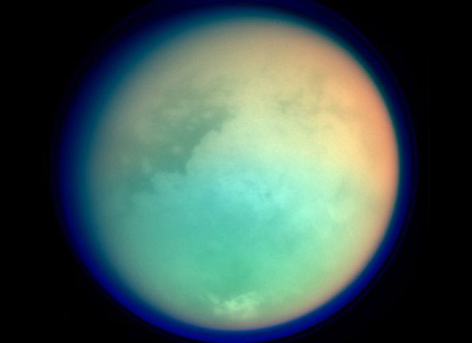OF THE
TIMES
Rather than water, the seas and lakes are however made up of liquid ethane, methane, and propane, and are thought to hold hundreds of times more natural gas and other hydrocarbons than the entire known oil and natural gas reserves on Earth.
Original article:
'Magic island' appears out of nowhere on Titan, Saturn's biggest moon, then quickly disappears
A nation that continues year after year to spend more money on military defense than on programs of social uplift is approaching spiritual doom.
This article reminds me of when Scotty reveals the formula for 'transparent aluminum' in Star Trek, Voyage Home (1986). [Link] Now here we are...
You can dish it out but you can't take it. -1
"Maybe the real trauma was realizing that the majority of injuries and fatalities were due to the actions of the IDF, the 'invincible' force that...
Given all the horrible things we are doing to each other in the world right now, does it really matter what Macron is married to? We all know he's...
This is the real monatomic gold?
To submit an article for publication, see our Submission Guidelines
Reader comments do not necessarily reflect the views of the volunteers, editors, and directors of SOTT.net or the Quantum Future Group.
Some icons on this site were created by: Afterglow, Aha-Soft, AntialiasFactory, artdesigner.lv, Artura, DailyOverview, Everaldo, GraphicsFuel, IconFactory, Iconka, IconShock, Icons-Land, i-love-icons, KDE-look.org, Klukeart, mugenb16, Map Icons Collection, PetshopBoxStudio, VisualPharm, wbeiruti, WebIconset
Powered by PikaJS 🐁 and In·Site
Original content © 2002-2024 by Sott.net/Signs of the Times. See: FAIR USE NOTICE

Where are they?